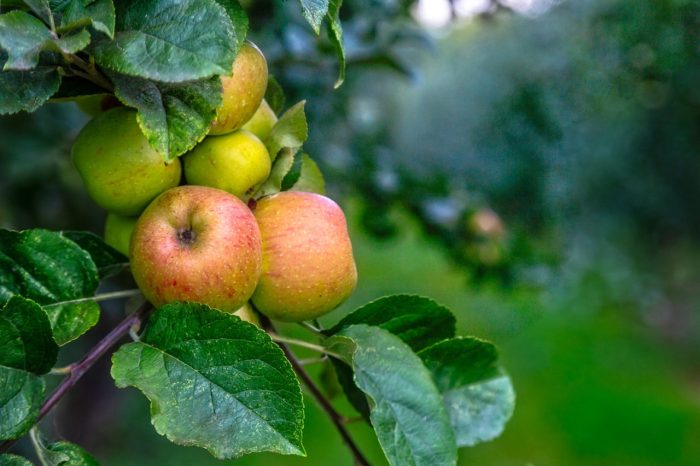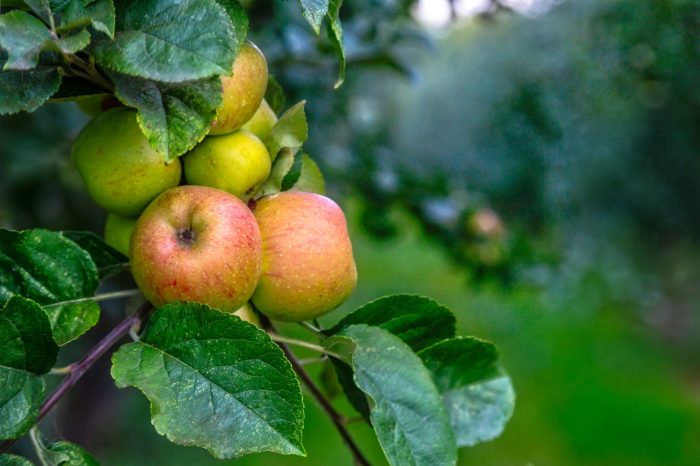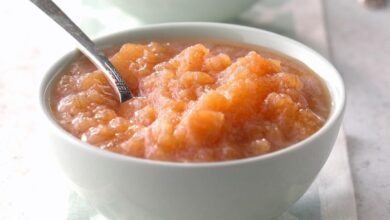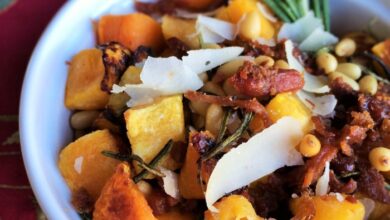
Mulling Spices for Cider: A Flavorful Journey
Mulling spices for cider take center stage, transforming this humble beverage into a warm, aromatic delight. From the history of spiced cider to the art of blending spices, this post delves into the world of flavor and tradition. Imagine the crisp autumn air, the scent of cinnamon and cloves filling your home, and a mug of spiced cider warming your hands.
This is the essence of mulling spices for cider, a symphony of flavors that creates a truly unforgettable experience.
Beyond the simple addition of spices, mulling cider involves a delicate dance of flavors. The warmth of cinnamon and cloves, the citrusy zest of orange peel, the subtle sweetness of star anise – each spice plays a crucial role in creating a balanced and complex profile.
Whether you prefer a traditional recipe or a modern twist, mulling spices for cider offer endless possibilities for customization and experimentation.
The Allure of Spiced Cider

The warm, comforting aroma of spiced cider has enchanted generations, its origins intertwined with history, tradition, and the simple pleasures of autumn. This beloved beverage, a symphony of sweet and spicy notes, has a rich cultural heritage that spans continents and centuries, its appeal transcending time and trends.
The aroma of cinnamon, cloves, and star anise simmering in cider is a sure sign that fall is here. It’s a comforting scent that reminds me of cozy evenings by the fireplace. Speaking of cozy, have you ever tried a no bake pumpkin cheesecake pie ?
It’s a delicious and easy dessert that’s perfect for this time of year. Back to the cider, I like to add a pinch of nutmeg for a touch of warmth and a hint of ginger for a bit of spice.
It’s the perfect combination to create a truly autumnal beverage.
The History of Spiced Cider
Spiced cider’s roots run deep, with evidence suggesting its consumption dates back to ancient times. In Europe, the practice of adding spices to cider likely originated in medieval times, where the use of spices was common in both food and drink.
The addition of spices, such as cinnamon, cloves, and nutmeg, served not only to enhance flavor but also to preserve the cider and mask any unpleasant tastes.
- Medieval Europe:During this era, spiced cider was a popular drink, particularly in the colder months. It was often served at feasts and celebrations, and its warming properties were appreciated in the harsh winters.
- Colonial America:European settlers brought their tradition of spiced cider to the New World, where it quickly became a staple in colonial life. The use of spices, readily available from trade routes, was further enhanced by the abundance of apples in the colonies.
The warm, comforting aroma of mulling spices fills the air, reminding me of cozy evenings by the fireplace. It’s a perfect time to experiment with different combinations, adding a touch of cinnamon, cloves, and star anise to my cider. Speaking of cozy, I’m also craving a hearty breakfast, and a bacon breakfast casserole gluten free sounds absolutely divine.
The savory flavors of the casserole would pair perfectly with the sweet, spiced cider. Maybe I’ll even add a sprinkle of cinnamon to the casserole for an extra touch of warmth!
- Modern Day:Today, spiced cider remains a beloved autumnal beverage, enjoyed around the world. It has evolved into a versatile drink, with numerous variations and interpretations, reflecting regional and personal preferences.
The Science of Spiced Cider
The magic of spiced cider lies in the synergistic interplay of flavors and aromas. The sweetness of the cider provides a canvas for the spices to dance upon, creating a complex and harmonious blend. The spices, with their unique chemical compounds, contribute to the overall sensory experience, enhancing the cider’s flavor and aroma.
The warm aroma of mulling spices simmering in cider is a comforting autumnal tradition. While the cider bubbles away, I often find myself drawn to the kitchen, where the idea of a quick and flavorful dinner beckons. That’s when I turn to my trusty pressure cooker for a delicious pressure cooker barbeque chicken – a perfect complement to the spiced cider and a meal that comes together in a flash.
The smoky chicken pairs beautifully with the warm, sweet notes of the cider, making for a satisfying and balanced meal.
- Cinnamon:This warm spice, with its characteristic sweet and woody notes, adds depth and complexity to the cider. Its aromatic compounds, like cinnamaldehyde, contribute to its distinctive flavor and fragrance.
- Cloves:Cloves, known for their pungent and slightly bitter taste, provide a warming and spicy element to the cider. Eugenol, a key compound in cloves, contributes to its characteristic aroma and flavor.
- Nutmeg:This spice, with its warm, slightly sweet, and nutty notes, adds a touch of complexity and depth to the cider. Myristicin, a compound found in nutmeg, contributes to its distinctive flavor and aroma.
Regional Variations of Spiced Cider
The art of spiced cider has evolved over time, resulting in diverse regional interpretations that reflect local ingredients, traditions, and preferences. From the classic New England cider to the modern twists on the classic recipe, spiced cider offers a world of flavors to explore.
- New England:Classic New England cider is typically made with a blend of apples, spices like cinnamon, cloves, and nutmeg, and often includes a touch of molasses or maple syrup. It is often served hot, with a cinnamon stick for garnish.
- German Glühwein:This spiced wine, similar to spiced cider, is a popular beverage in Germany, especially during the Christmas season. It is made with red wine, spices like cinnamon, cloves, and orange peel, and often includes sugar or honey for sweetness.
- Spanish Sidra:In Spain, cider is often served with a splash of apple juice and a touch of cinnamon. This combination, known as “sidra con canela,” provides a refreshing and aromatic beverage.
Essential Spices for Cider: Mulling Spices For Cider

The art of crafting spiced cider lies in the masterful blend of warming spices, each contributing its unique flavor profile to create a symphony of taste. The key is to strike a harmonious balance between sweet, savory, and warming notes, resulting in a beverage that is both comforting and invigorating.
Spice Profiles and Usage, Mulling spices for cider
A carefully curated selection of spices forms the foundation of a truly memorable spiced cider. Here’s a closer look at some common contenders and their contributions to the overall flavor:
| Spice | Flavor Profile | Usage Tips | Suggested Pairings |
|---|---|---|---|
| Cinnamon | Warm, sweet, slightly woody | Use cinnamon sticks for a more pronounced flavor, or ground cinnamon for a milder taste. | Apple, clove, nutmeg |
| Nutmeg | Warm, slightly sweet, with a hint of earthiness | Use freshly grated nutmeg for the best flavor. | Cinnamon, ginger, cloves |
| Cloves | Spicy, pungent, slightly bitter | Use sparingly, as cloves can be overpowering. | Cinnamon, orange peel, star anise |
| Ginger | Warm, pungent, with a slightly citrusy note | Use fresh ginger for the most intense flavor. | Cinnamon, nutmeg, cardamom |
| Star Anise | Licorice-like, sweet, with a hint of anise | Use whole star anise for a more pronounced flavor, or ground star anise for a milder taste. | Cinnamon, cloves, orange peel |
| Allspice | Warm, slightly sweet, with a hint of pepper | Use allspice berries for a more pronounced flavor, or ground allspice for a milder taste. | Cinnamon, nutmeg, cloves |
| Cardamom | Warm, slightly sweet, with a citrusy and floral note | Use green cardamom pods for a more pronounced flavor, or ground cardamom for a milder taste. | Ginger, cinnamon, nutmeg |
| Black Pepper | Spicy, pungent, with a slightly earthy note | Use sparingly, as black pepper can be overpowering. | Ginger, cloves, allspice |
Blending Spice Combinations
The art of crafting the perfect spiced cider lies in the harmonious interplay of flavors. By carefully selecting and blending spices, you can create a symphony of taste that will warm your heart and tantalize your taste buds.
Exploring Flavor Profiles
The magic of spice blends lies in their ability to create distinct flavor profiles. These profiles range from warm and comforting to bright and citrusy, offering a spectrum of options to suit every palate.
- Warm and Cozy:These blends evoke feelings of warmth and comfort, perfect for chilly evenings. They often feature spices like cinnamon, cloves, nutmeg, and ginger, which create a rich and aromatic experience.
- Fruity and Festive:These blends introduce a touch of sweetness and fruitiness, ideal for holiday gatherings. Spices like star anise, cardamom, and allspice contribute to a complex and inviting flavor profile.
- Citrusy and Zesty:These blends offer a bright and refreshing twist, perfect for those who enjoy a citrusy kick. Spices like orange peel, lemon zest, and coriander add a vibrant and invigorating touch.
Popular Spice Blends for Cider
Here are some popular spice blends for cider, categorized by their flavor profiles, along with their suggested cider pairings:
| Blend Name | Spice Composition | Suggested Cider Pairing |
|---|---|---|
| Classic Warm Spice | Cinnamon sticks, cloves, nutmeg, star anise, ginger | Traditional apple cider, sweet cider |
| Fruity Festive Blend | Cardamom pods, star anise, allspice berries, orange peel, cinnamon stick | Spiced apple cider, pear cider |
| Citrusy Zest Blend | Lemon zest, orange peel, coriander seeds, cinnamon stick, ginger | Dry cider, apple cider with a tart note |
“The key to a successful spice blend is balance. Each spice should complement the others, creating a harmonious and well-rounded flavor profile.”






